IELTS Writing Task 1 Bar Chart: Telecommunications
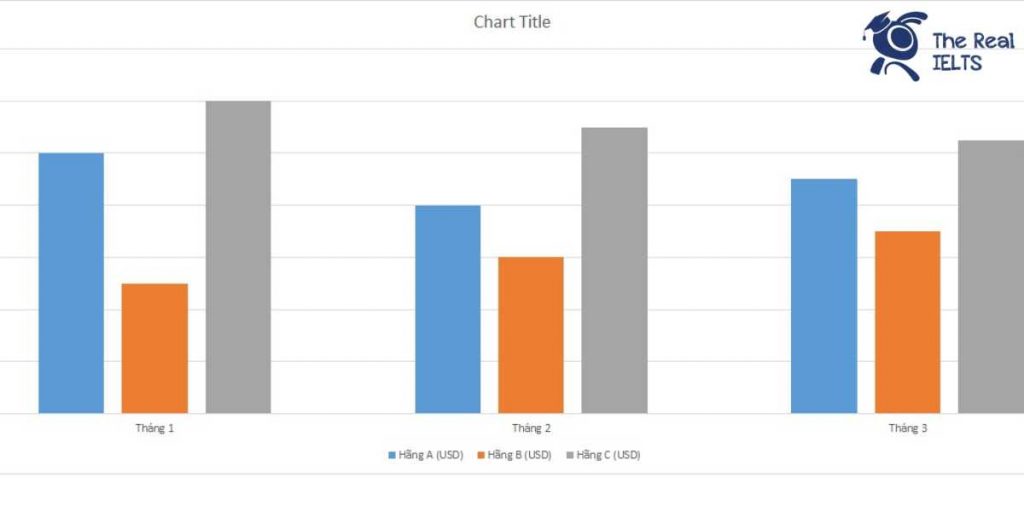

IELTS Writing Task 1 yêu cầu thí sinh mô tả biểu đồ cột (Bar Chart) về chi phí dịch vụ viễn thông của ba hãng khác nhau trong ba tháng. Thí sinh cần phân tích sự biến động chi phí, so sánh sự khác biệt giữa các hãng và xu hướng trong khoảng thời gian này. Bài viết nên bao gồm các thông tin chính xác, cụ thể và sử dụng ngôn ngữ rõ ràng, súc tích để đạt điểm cao. Đọc bài này Cách làm bài IELTS Writing Task 1 Bar Chart trước khi làm bài. Bạn cũng có thể đọc lại bài nói về Task 1 tại đây: IELTS Writing Task 1 cần lưu ý những gì? Đọc thêm về xây dựng lộ trình học IELTS của The Real IELTS. IELTS Writing Task 1 Bar Chart: Telecommunications You should spent about 20 mintutes on this task IELTS Writing Task 1 requires candidates to describe a bar chart depicting the telecommunications service costs of three different companies over three months. Candidates need to analyze the fluctuations in costs, compare the differences between the companies, and identify trends over this period. The essay should include accurate, specific information and use clear, concise language to achieve a high score. You should write at least 150 words. Tháng Hãng A (USD) Hãng B (USD) Hãng C (USD) Tháng 1 50,000 45,000 52,000 Tháng 2 48,000 46,000 51,000 Tháng 3 49,000 47,000 50,500 Bài mẫu 1 Overview The table provides an analysis of telecommunication service costs for three different companies—Company A, Company B, and Company C—over three months. The data, represented in USD, highlights the monthly expenses incurred by each company from January to March. This overview offers insights into the cost trends and allows for a comparative analysis of each company’s expenditure over the specified period. Body 1: Monthly Cost Analysis In January, Company A had the highest expenditure at $50,000, followed closely by Company C at $52,000, and Company B at $45,000. This initial month shows a significant variance in costs among the three companies, with Company B being the most economical choice. Moving into February, the costs for Company A decreased slightly to $48,000, while Company B experienced a minor increase to $46,000. Company C also saw a reduction, bringing its costs down to $51,000. Despite these changes, Company B continued to maintain the lowest expenditure among the three. Body 2: Overall Trends and Comparisons March saw a further convergence in costs, with Company A’s expenses rising to $49,000 and Company B’s to $47,000. Company C, on the other hand, reduced its costs to $50,500. This month marked the smallest difference in costs between the three companies, indicating a trend towards cost optimization across the board. Over the three months, Company B consistently maintained the lowest costs, making it the most cost-effective provider. Company A’s costs showed a slight downward trend, while Company C demonstrated the most fluctuation. Overall, the data suggests a competitive landscape where each company is striving to manage and reduce their telecommunications expenses effectively. Bài mẫu 2 Overview The table presents the monthly telecommunications service costs for three different companies (Company A, Company B, and Company C) over a three-month period. The data highlights the variations in costs among the companies from January to March. Body 1 In January, Company A had the highest service cost at $50,000, followed closely by Company C at $52,000, and Company B at $45,000. This initial month shows a noticeable disparity among the companies, with Company C leading in expenditures and Company B having the lowest cost. In February, the costs for all companies showed slight changes. Company A’s expenses decreased to $48,000, while Company B saw a small increase to $46,000. Company C experienced a slight reduction in cost to $51,000. Despite these changes, Company C remained the highest spender, with Company B still having the lowest cost among the three. Body 2 March saw further adjustments in telecommunications costs. Company A’s costs increased marginally to $49,000. Company B continued its upward trend with costs rising to $47,000. Meanwhile, Company C’s expenses dropped to $50,500. Although Company C maintained the highest costs overall, the gap between the companies’ expenses narrowed over the three months, showing a trend towards more similar expenditure levels. In summary, over the three months, Company C consistently had the highest telecommunications service costs, while Company B had the lowest. Company A’s costs fluctuated slightly but remained intermediate compared to the other two companies. The data indicates a gradual convergence in service costs among the three companies by the end of the period.
IELTS Writing Task 2 dạng Agree or Disagree Part 1
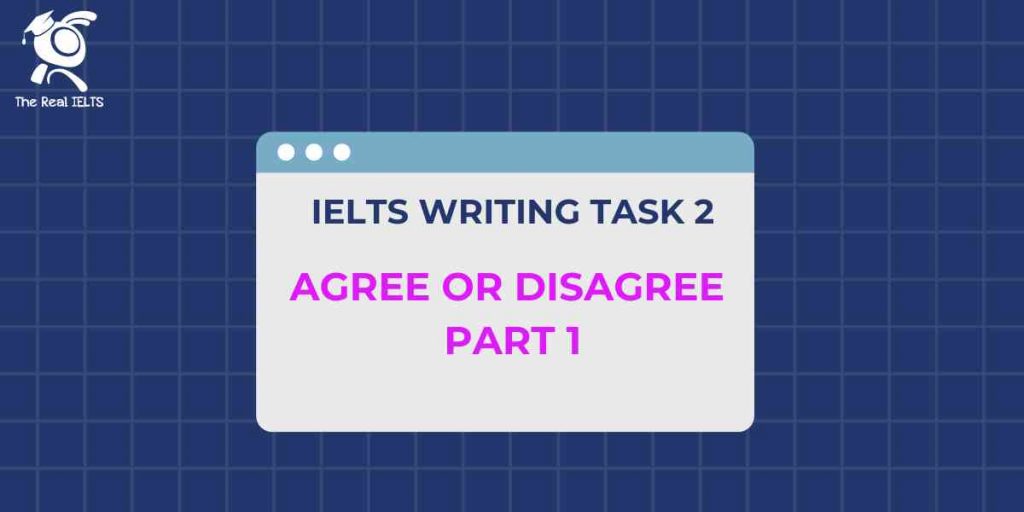

Đề bài IELTS Writing Task 2 dạng Agree or Disagree Part 1
IELTS Writing Task 1 Bar Chart: Consumption
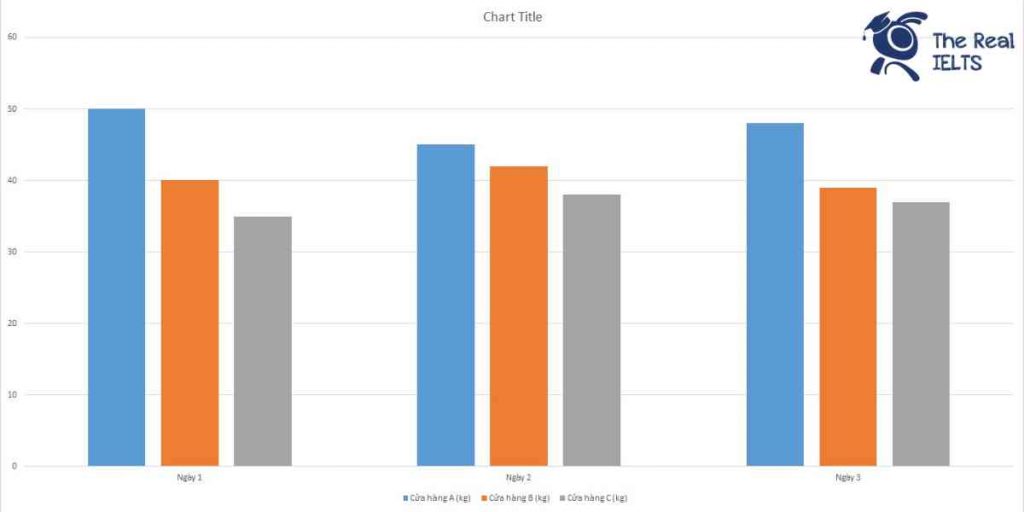

IELTS Writing Task 1 yêu cầu bạn mô tả biểu đồ bar chart về lượng tiêu thụ bột giặt trong 3 ngày của 3 cửa hàng khác nhau.
IELTS Writing Task 1 Bar Chart: Flu Infection
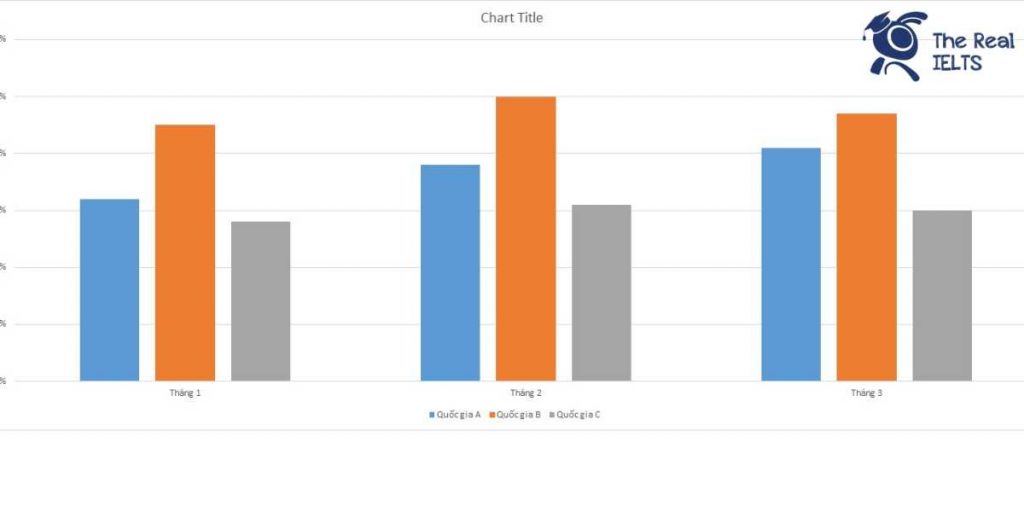

Bài IELTS Writing Task 1 Bar Chart: Flu Infection sẽ có biểu đồ cột so sánh tỷ lệ mắc bệnh cúm trong 3 tháng ở 3 quốc gia châu Âu. Dữ liệu cho thấy sự khác biệt rõ rệt về tỷ lệ mắc bệnh giữa các quốc gia trong từng tháng, với một số quốc gia ghi nhận tỷ lệ cao hơn trong các tháng mùa đông, cho thấy ảnh hưởng của thời tiết và yếu tố môi trường. Đọc bài này Cách làm bài IELTS Writing Task 1 Bar Chart trước khi làm bài. Bạn cũng có thể đọc lại bài nói về Task 1 tại đây: IELTS Writing Task 1 cần lưu ý những gì? Đọc thêm về xây dựng lộ trình học IELTS của The Real IELTS. IELTS Writing Task 1 Bar Chart: Flu Infection You should spent about 20 mintutes on this task The bar chart compares the flu infection rates over three months in three European countries. The data reveals significant differences in infection rates between countries each month, with some countries recording higher rates during the winter months, indicating the impact of weather and environmental factors. You should write at least 150 words. Tháng/Nước Quốc gia A Quốc gia B Quốc gia C Tháng 1 3.2% 4.5% 2.8% Tháng 2 3.8% 5.0% 3.1% Tháng 3 4.1% 4.7% 3.0% IELTS Writing 1 Overview The table illustrates the influenza infection rates over a span of three months in three European countries: Country A, Country B, and Country C. The data captures the percentage of the population affected by influenza in January, February, and March. This information is crucial for understanding the seasonal trends and the relative impact of influenza across different regions. Body 1 In January, the infection rates were relatively low across all three countries. Country A reported an infection rate of 3.2%, Country B had the highest rate at 4.5%, and Country C had the lowest rate at 2.8%. This indicates that during the start of the year, influenza was most prevalent in Country B, whereas Country C experienced the least impact. Body 2 As the months progressed, the infection rates showed a noticeable increase. In February, Country A saw a rise to 3.8%, Country B’s rate climbed to 5.0%, and Country C increased slightly to 3.1%. By March, Country A’s infection rate reached 4.1%, Country B’s rate slightly decreased to 4.7%, and Country C’s rate decreased to 3.0%. This trend highlights a peak in February for Country B, while Country A continued to see an increasing trend, and Country C’s rates remained relatively stable with minor fluctuations. In summary, the influenza infection rates varied across the three countries, with Country B generally experiencing higher rates compared to the other two. The data reflects the dynamic nature of influenza spread and emphasizes the importance of monitoring and preparedness in managing public health. IELTS Writing 2 Overview The statistics provided represent the influenza infection rates over three months in three European countries: Country A, Country B, and Country C. This data illustrates the fluctuation in infection rates from January to March, offering insights into the seasonal impact and the differences between the nations in terms of influenza prevalence. Body 1 In January, the infection rates were 3.2% for Country A, 4.5% for Country B, and 2.8% for Country C. Country B had the highest rate of influenza infections, while Country C had the lowest. This could be attributed to various factors such as differences in healthcare infrastructure, population density, or public health policies. Body 2 February saw a general increase in infection rates across all three countries. Country A’s rate rose to 3.8%, Country B’s to 5.0%, and Country C’s to 3.1%. This increase might indicate the peak of the flu season, suggesting that more aggressive measures might be needed during this time to control the spread of the virus. Body 3 In March, Country A reported an infection rate of 4.1%, Country B’s rate slightly decreased to 4.7%, and Country C had a minor decrease to 3.0%. The data suggests that while the infection rates in Countries B and C began to stabilize, Country A continued to experience a rise. This trend could be analyzed to understand the efficacy of interventions and the natural progression of the flu season in different regions.
IELTS Writing Task 1 Bar Chart: Divorce Applications
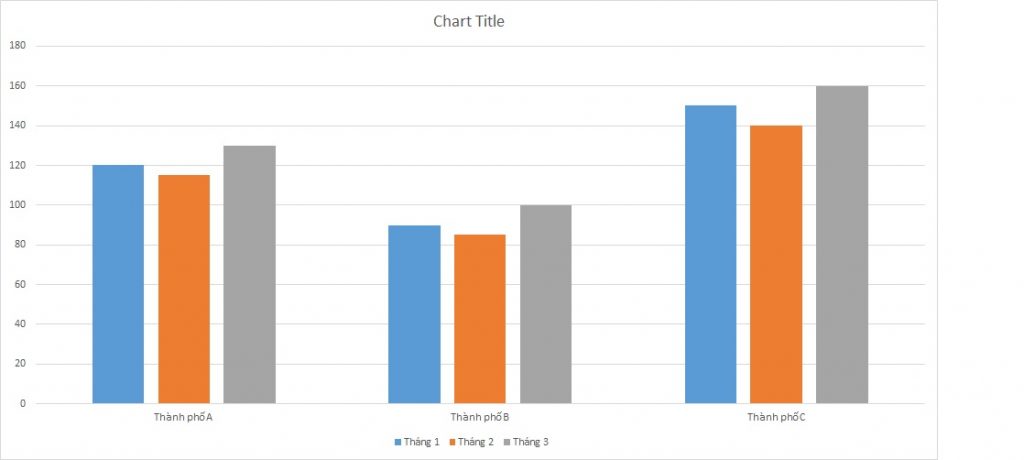

IELTS Writing Task 1 yêu cầu mô tả biểu đồ cột về số lượng đơn xin ly dị trong 3 tháng của ba thành phố.
IELTS Writing Task 1 Bar Chart: New Products
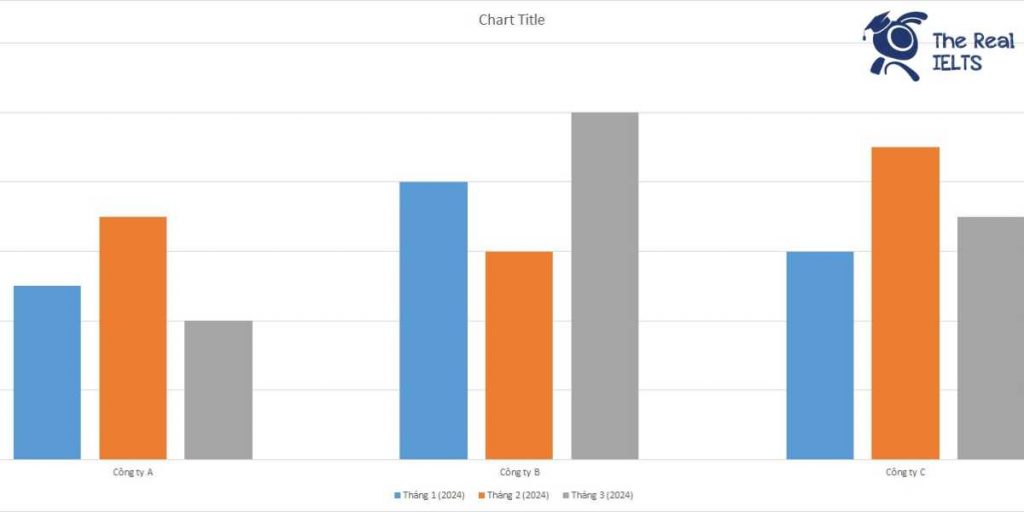

IELTS Writing Task 1 yêu cầu mô tả biểu đồ Bar Chart minh họa số lượng sản phẩm mới ra mắt trong 3 tháng của ba công ty khác nhau.
Cách làm bài thi IELTS Writing Task 2
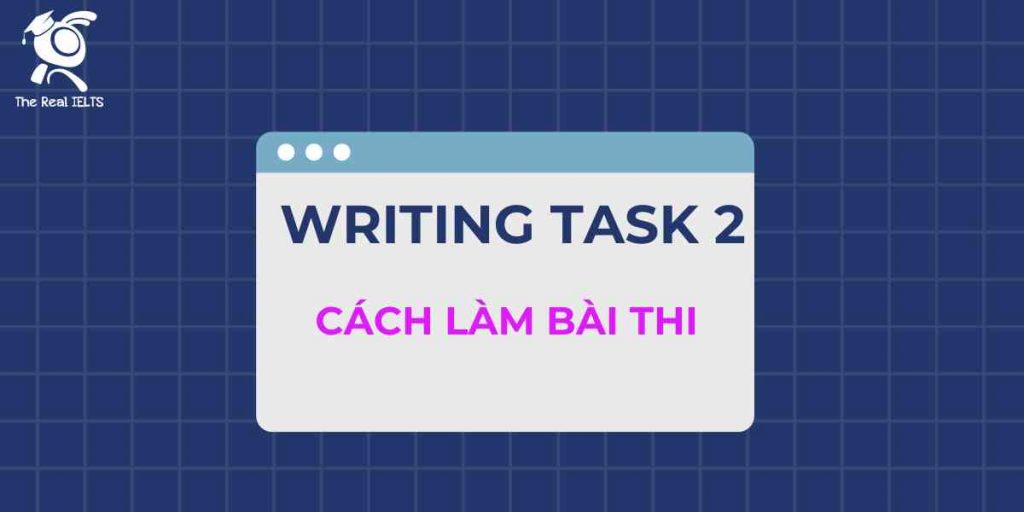

IELTS Writing Task 2 yêu cầu viết một bài luận ngắn, thường là 250 từ, dựa trên một chủ đề cụ thể.





